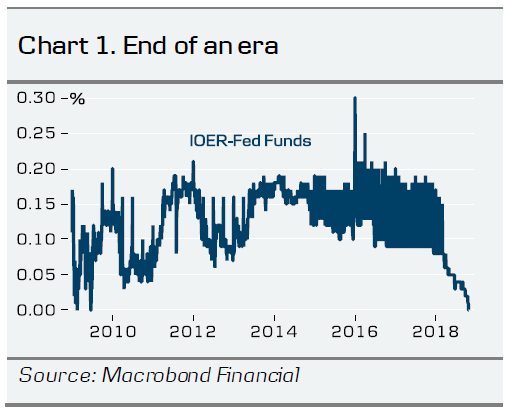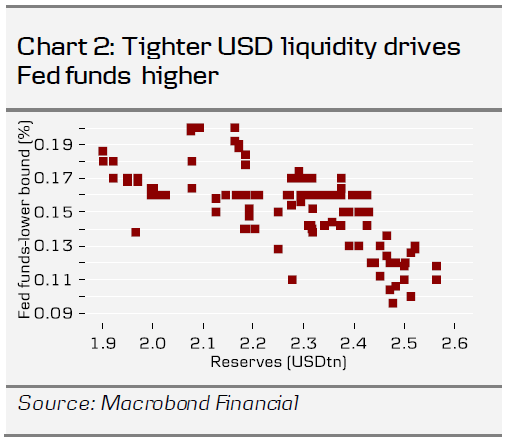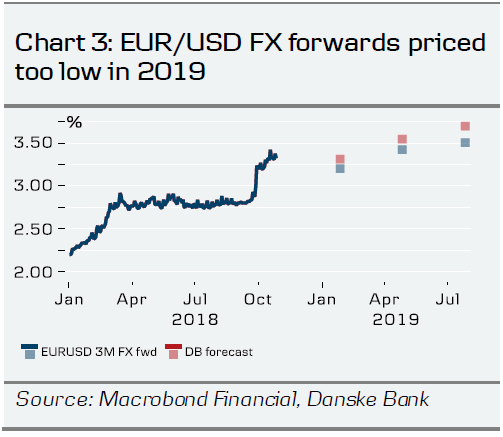- Upward pressure on the Fed funds rate continues and it now equals the IOER.
- Likely to see another 20bp ‘adjustment’ hike to IOER in December, but more importantly, it may speed up the Fed’s discussion about ending QT next year.
- In our view, 6-12M EUR/USD FX forwards are still priced too low.
End of an era
This week, the effective Federal Funds rate (Fed funds) rose to 2.20. It means that it is now trading at par with the interest on excess reserves (IOER). That further marks the end of an era, where banks have received a higher interest rate by buying reserves rather than lending excess funds in the overnight money market (see Chart 1). That the Fed funds rate now equals the IOER is in itself less important. Keep in mind that among European central banks employing a corridor system, it is the norm that the overnight money market rate is above the central bank deposit rate. In the big picture, what is important to consider is that the Fed funds rate is creeping towards the upper bound of the Fed’s target range again – it is now 5bp below than it was in May. The Fed prefers the Fed funds rate to be in the middle of its target range, which means it is about 7.5bp too high now.
Has the Fed underestimated the impact of QT?
The reoccurring upward pressure on Fed funds rate is mainly a result of the quantitative tightening (QT) policy, where the Fed reduces its holdings of US Treasuries and mortgage-backed securities and at a similar pace reduces the supply of reserves in the money market – see Chart 2 for the link between supply of reserves and the Fed funds rate. It thus beg the question, of whether Fed’s QT policy is discordant with its interest rate policy, or at least whether the scope for further reduction of the balance sheet is limited.
When the Fed made an ‘adjustment’ hike in June (by hiking only IOER 20bp), where the gap between Fed funds and the upper bound was also 5bp, Fed Chair Jerome Powell said during the Q&A session that, ‘we don’t expect to have to do this often or again, but we’re not sure about that. If we have to do it again, we’ll do it again’, but here we are again already four months later. Furthermore, a working paper from a Boston Fed economist (see here) estimated that the effect on the Fed funds from QT in January 2019 would be 2bp. Taking into account the IOER adjustment, the effect has so far been 9bp.
Potential for early end to QT
We are likely to see another 20bp ‘adjustment’ hike of the IOER in December, but there is also the possibility of a 5bp cut in November or a mere 15bp hike in December. However, in our view, the main implication is that it raises the potential for an early end to QT, i.e. the Fed ending it in H1 next year, while consensus is likely to still expect the Fed to continue QT into 2020. We note that US Congress is likely to have a preference for the Fed’s balance sheet to return to a lower level. We have already factored this into our projection of EUR/USD FX forwards (Chart 3). Hence, we still see 6-12M EUR/USD FX forwards priced too low.















